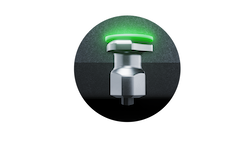If you want to drive with good control and safety during the winter, you will have to go for winter tyres. If your tyres are not officially approved for winter use, that means that they are not meeting the performance criteria for winter driving. You can’t really expect your tyres to provide you with sufficient safety if your tyres don’t meet the performance criteria’s and haven’t passed the performance tests on snow. This means that you will not have sufficient grip, you might end up skidding in curves, or not have enough traction to get you up a hill. Your braking distance will also be significantly prolonged when driving on snow and ice.
You don’t really leave your home in summer shoes during the winter when there is snow. That would be quite crazy, but then you expect that your summer tyres will work during the winter; some might say that is also crazy. The winter really demands high-quality premium tyres that are winter approved. This is the only way that you can safely drive in challenging conditions. Snow and ice are so different from the dry tarmac. This will require a completely different tread pattern to create traction on snow and be able to push snow and slush away from the area between the tyre and the road to avoid slushplaning. The same way that summer tyres will need to push water away during the rainy summer days. However, snow is different from water, and thus, you will need a different design to be effective.
Contrary to what most believe, the winter tyres outperform summer tyres on dry surfaces when the temperature drops below zero degrees. This is due to the rubber compound used in summer tyres does not have additives to keep the tyres soft at low temperatures as they are optimized for warm summer temperatures. When the tyre gets hard, it will lose a lot of the traction they are able to provide during warm temperatures. However, the winter tyres are optimized for low temperatures to remain soft and create the necessary traction. They also have the correct tread pattern to handle the snow and ice.
So if you want to make sure that you are safe when driving during the winter, you have to make sure that you have winter approved tyres that are in good condition, with sufficient remaining tread depth. Tyres that are worn out and have a low tread depth are not able to perform as good and will make the driving less safe. Braking distance will be prolonged, and the risk for slushplaning is also increased. So once you go below 4 mm tread depth, it is time to invest in a new set of tyres. In addition to that, the tyres need to be in good condition; they also need to have the correct tyre pressure so that they can perform as intended.
For more information regarding a range of winter approved tyres, visit: https://www.nokiantyres.com/
